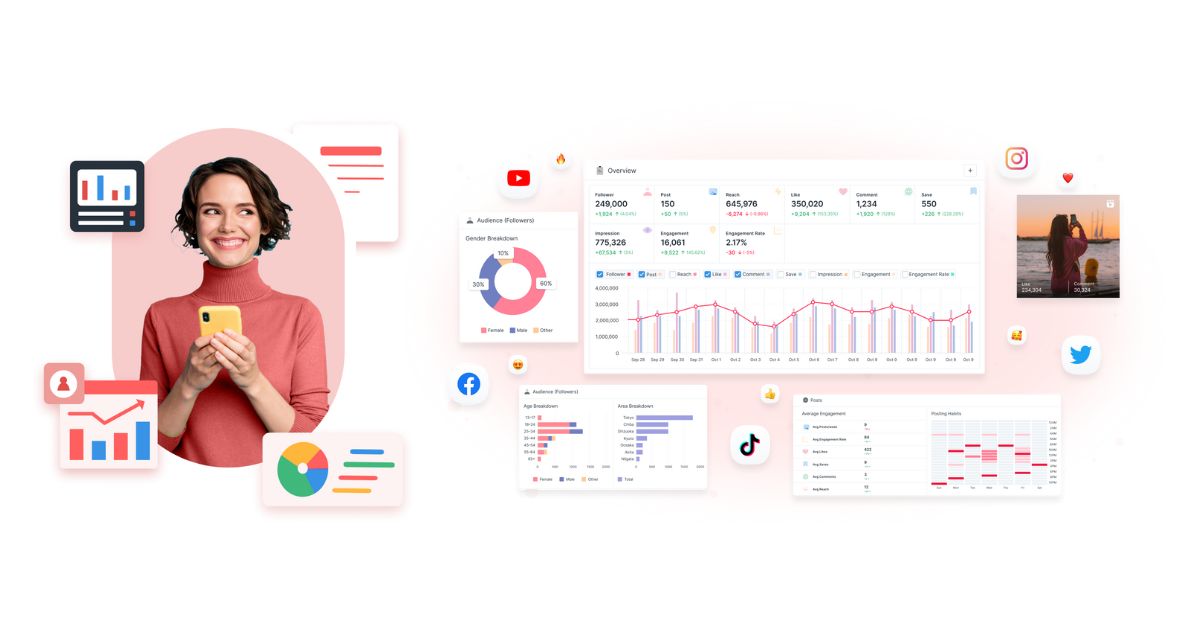In today’s digital landscape, influencer marketing has become a cornerstone for brands looking to connect with their target audience. Defined as a collaborative form of marketing where brands leverage individuals with a significant online following to promote their products or services, influencer marketing analysis is a dynamic and influential strategy in the business realm.
The Power of Influencer Marketing Analysis

- Impact on Consumer Behavior: Social media influencers hold the power to sway consumer decisions. Their recommendations and endorsements resonate with audiences, creating a ripple effect that drives purchasing behavior.
- Reach and Engagement Metrics: Understanding the reach and engagement metrics of influencers is crucial. It’s not just about the number of followers but the level of engagement and interaction they have with their audience.
Types of Influencers
- Macro-Influencers: Celebrities and individuals with a massive following fall into this category. Their broad reach makes them suitable for large-scale campaigns.
- Micro-Influencers: With a more niche audience, micro-influencers focus on specific topics or industries, often resulting in more genuine connections with their followers.
- Nano-Influencers: These influencers have a smaller yet highly engaged following. Their recommendations carry weight due to the close-knit nature of their audience.
Influencer Marketing Strategies
- Collaboration and Partnerships: Building meaningful partnerships with influencers is key. Successful collaborations stem from aligning brand values with the influencer’s brand.
- Content Creation and Authenticity: Authenticity is paramount in influencer marketing. Crafting genuine content that resonates with the audience ensures a lasting impact.
- Long-Term vs. Short-Term Campaigns: Deciding between long-term partnerships or short-term campaigns depends on the brand’s goals. Both approaches have their merits and are situational.
Analyzing Influencer Effectiveness
- Metrics for Success: Measuring the success of influencer campaigns involves tracking metrics such as engagement rates, click-through rates, and conversion rates.
- Tools for Measurement: Various tools are available for in-depth analysis, providing insights into the performance and effectiveness of influencer collaborations.
Challenges
- Authenticity Concerns: As influencer marketing analysis grows, maintaining authenticity becomes a challenge. Striking a balance between promotional content and authenticity is crucial.
- Overcoming Saturation: With the increasing number of influencers, breaking through the noise requires innovative strategies to avoid market saturation.
- Dealing with Negative Publicity: Negative publicity can harm both brands and influencers. Implementing crisis management plans is vital to navigating potential challenges.
Emerging Trends in Influencer Marketing
- AI and Influencer Matching: Artificial intelligence plays a role in optimizing influencer selection and ensuring better alignment between brands and influencers.
- Virtual Influencers: The rise of virtual influencers introduces a new dimension to influencer marketing, challenging traditional norms.
- Niche Influencer Markets: Brands are increasingly turning to niche influencers, targeting specific demographics for more personalized connections.
The Future of Influencer Marketing
- Evolving Strategies: The landscape of influencer marketing analysis will continue to evolve, with new strategies emerging to keep pace with changing consumer behaviors.
- Integrating Influencers into Holistic Campaigns: Influencers will become integral parts of holistic marketing campaigns, seamlessly blending with other advertising channels.
Conclusion
In conclusion, influencer marketing analysis is a dynamic force that is here to stay. Brands that understand the nuances of this strategy and adapt to emerging trends will thrive in the ever-evolving digital landscape.
If you’re ready to elevate your marketing strategies and explore cutting-edge solutions, request a demo from AIM Technologies today.
FAQs
What metrics should brands prioritize when evaluating the success of influencer campaigns?
- Brands should focus on engagement rates, click-through rates, and conversion rates to gauge the effectiveness of influencer collaborations.
How can brands maintain authenticity in influencer marketing amid growing concerns?
- Authenticity can be maintained by aligning brand values with the influencer’s brand and crafting genuine, relatable content.
Are virtual influencers a passing trend or a long-term fixture in influencer marketing?
- Virtual influencers represent an emerging trend with the potential to reshape influencer marketing norms in the long term.
What challenges do nano-influencers pose for brands compared to macro-influencers?
- Nano-influencers may have a smaller reach but often boast a highly engaged audience, presenting an opportunity for more targeted and personalized campaigns.
How can brands effectively deal with negative publicity in influencer marketing?
- Implementing robust crisis management plans and maintaining transparent communication can help brands navigate negative publicity effectively.




